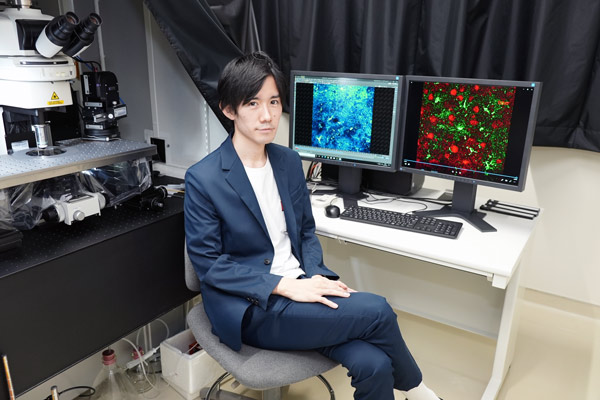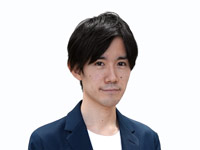Jul. 1, 2022
Astrocytes, not just brain glue
Jun Nagai, Team Leader
Please describe your role at RIKEN.
I’m a team leader in the Laboratory for Glia-Neuron Circuit Dynamics at the Center for Brain Science, which was established 18 months ago. We are testing a hypothesis that neurons are not the only players in brain function: there are also key interactions between neurons and other brain cells. Glia are a type of brain cell that support neuronal insulation and communication, and nutrient and waste transport. While most people are familiar with neurons, glia occupy more than a half of our brain. All brain disorders feature some alterations of glia, both in human patients and in the lab mice that we study. Despite their importance, glia are still a bit of a mystery, even to scientists.
What excites you about your current research?
Small changes in the brain can have outsized effects on our behavior and health—so is there anything common across brain conditions? It’s impossible to mention a brain disease that isn’t related to glial cells. Glia is Greek for glue and for a long time scientists thought these cells just filled space in the brain, acting as a scaffolding structure for neurons. I focus on astrocytes, a type of star-shaped glial cell. Progress in the last decade has revealed that astrocytes are not passive, but actively regulate neural circuits in healthy and diseased brains. We know this because scientists, including myself, have developed tools to monitor and manipulate glial cells. These include specialized multi-photon laser scanning microscopy and opto-/chemo-genetics, as well as in silico analysis pipelines.

Please describe your long-term research goals.
Currently, there are no treatments or diagnoses for human neurological and neuropsychiatric disorders stemming from glial cells, so my hope is to provide a new perspective on brain function and dysfunction that will lead to new therapies or diagnoses.
How did you become interested in your current field of research?
There aren’t many jobs that let you be yourself, but as a scientist I can 100% be myself. This need stems from a keen sensitivity to individual differences that I developed early in life. I asked my parents why my siblings, who have developmental disabilities, are different: they said ‘it’s just the brain, everything else is the same’. To improve the recognition and acceptance of human differences, I realized that I have to study the brain.
What made you decide to become a scientist?
I was tempted to become a medical doctor, but I realized my impact would possibly be more limited than I thought. You could treat patients every day, but you can’t cure the incurable. Scientists have freedom to think out of the box to solve those problems, and though it could take tens of years, it could help millions of people.
RIKEN CBS Faculty & Labs: Laboratory for Glia-Neuron Circuit Dynamics
Rate this article

